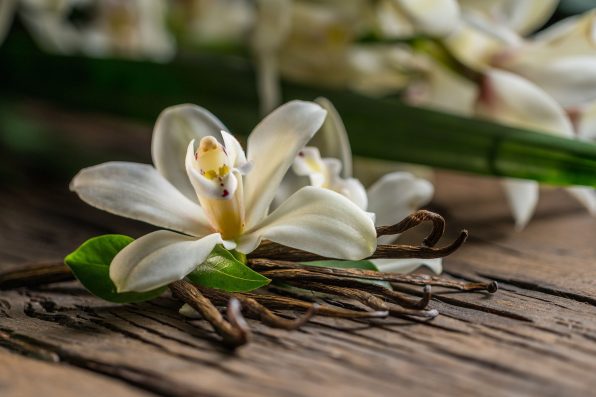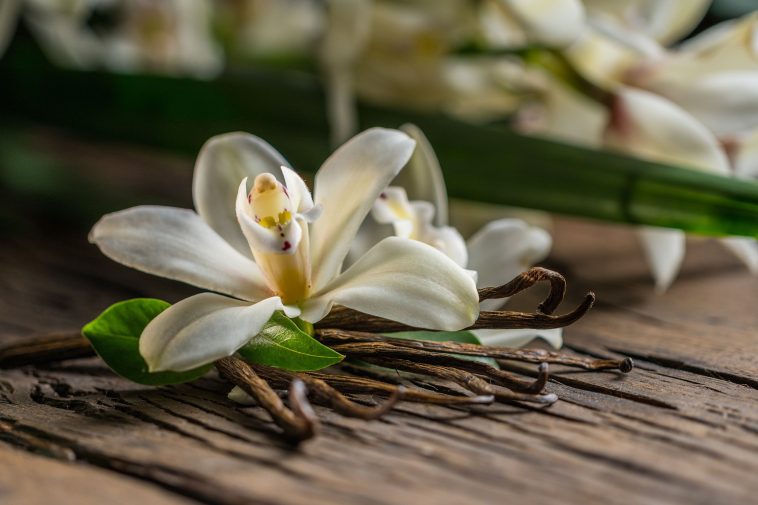If you do a lot of baking, vanilla extract is one of those ingredients you probably use all the time. However, its origin isn’t familiar to everyone. Have you ever stopped to ask where exactly vanilla extract comes from? Or what vanilla even is? Well, we’ve got answers, so keep reading to find out more.
For starters, vanilla comes from orchids in the genus Vanilla. Those orchids originally came from Mesoamerica and only grow in very specific regions of the world, including parts of Mexico and Madagascar, the latter country producing a whopping 80 percent of all the flowers.
The harvesting process is extremely labor-intensive. The pale, waxy, vine-like plants bloom just one morning each year, so farmers must move quickly to ensure that the flowers mature into vanilla pods. They hand-pollinate the orchids by pushing the male and female segments of each flower together.
The success of the pollination is immediately apparent because the thick green base of the flower will swell. Eventually, the swollen base will transform into a long, green seedpod that will turn yellow when ripened and split open at the end.
Vanilla is one of the most expensive spices in the world due to the time and energy it takes to cultivate the crop. Aside from the painstaking practice of hand pollination, the vanilla beans must be sorted and graded after harvesting.
Then, they are blanched in hot water to slow down fermentation. From there, they will undergo alternating periods of drying in the sun during the daytime and sweating in containers at night.
The whole process can take around a year. Plus, about five to seven pounds of green vanilla beans are needed to produce just one pound of processed vanilla, which drives up the prices even further. So, it might not be too much of a surprise to learn that most of the vanilla we consume is actually artificial vanilla flavoring.
In reality, 99 percent of the world’s vanilla extract is fake imitation vanilla. Instead of coming from the plant itself, the artificial stuff is flavored with vanillin, a compound that is synthesized from petrochemicals. Vanillin is essentially made up of the same compounds that occur naturally in real vanilla beans, but it’s a lab-produced version.
It also mimics vanilla’s smell, but some may argue that it doesn’t quite capture the essence of true vanilla. On the other hand, not even professional tasters have been able to detect a difference in flavor when it’s used in cakes and cookies.

Sign up for Chip Chick’s newsletter and get stories like this delivered to your inbox.


